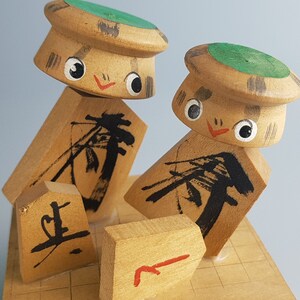
This is considered a kishuu (surprise) opening.
SHOGI DEMON PROFESSIONAL
Nowadays there are no professional players who play this opening.

SHOGI DEMON SERIES
The promotions can be summarized as series of promotion chains, as follows.
SHOGI DEMON FOR FREE
(The queen could also be abbreviated FK for free king, and the kirin as Ky for kylin.) Pieces marked with an *asterisk are only available with promotion. Listed below are the pieces of the game and, if they promote, which pieces they promote to. This shows who controls the piece during play. The pieces of the two sides do not differ in color, but instead each piece is shaped like a wedge, and faces forward, toward the opposing side. On the reverse side of some pieces are two or three other characters, often in a different color such as red this reverse side is turned up to indicate that the piece has been promoted during play. The kirin's name is sometimes anglicised as kylin.Įach piece has its name in the form of one or two kanji written on its face. The queen is sometimes referred to as the free king, a direct translation of its Japanese name. Several of the English names were chosen to correspond to rough equivalents in Western chess, rather than as translations of the Japanese names. From largest to smallest (roughly most to least powerful) they are: The pieces are of slightly different sizes. In all, the players must remember 43 moves for these pieces. A pair of dots may be placed just beyond the fifth rank on each side to mark the promotion zones and aid in the initial setup of the two camps.Įach player has a set of 78 wedge-shaped pieces of 36 types. The squares are undifferentiated by marking or color. Two players, Black and White (or 先手 sente and 後手 gote), play on a board composed of squares in a grid of 16 ranks (rows) by 16 files (columns) with a total of 256 squares. Unlike standard shogi, captured pieces may not be dropped back into play by the capturing player. The objective of the game is to capture the opponent's king and, if present, the prince, which counts as a second king. 1.5.1 Step movers and limited range movers.It is not clear if the game was ever played much historically, as there is no record of sets ever having been made. The descriptions listed here are a likely reconstruction based on chu shogi, the primary basis of tenjiku shogi, but not all contemporary players follow these historically-based rules.

Different sources often differ significantly in the moves attributed to the pieces. The game dates back to the 15th or 16th century and was based on the earlier chu shogi, which itself was based on dai shogi.īecause of the terse and often incomplete wording of the historical sources for the large shogi variants, except for chu shogi and to a lesser extent dai shogi (which were at some points of time the most prestigious forms of shogi being played), the historical rules of tenjiku shogi are not clear.


Tenjiku shogi (天竺将棋 tenjiku shōgi, "Indian chess" or 天竺大将棋 tenjiku dai shōgi "great Indian chess") is a large-board variant of shogi (Japanese chess). Historically, the board would not have been checkered.


 0 kommentar(er)
0 kommentar(er)
